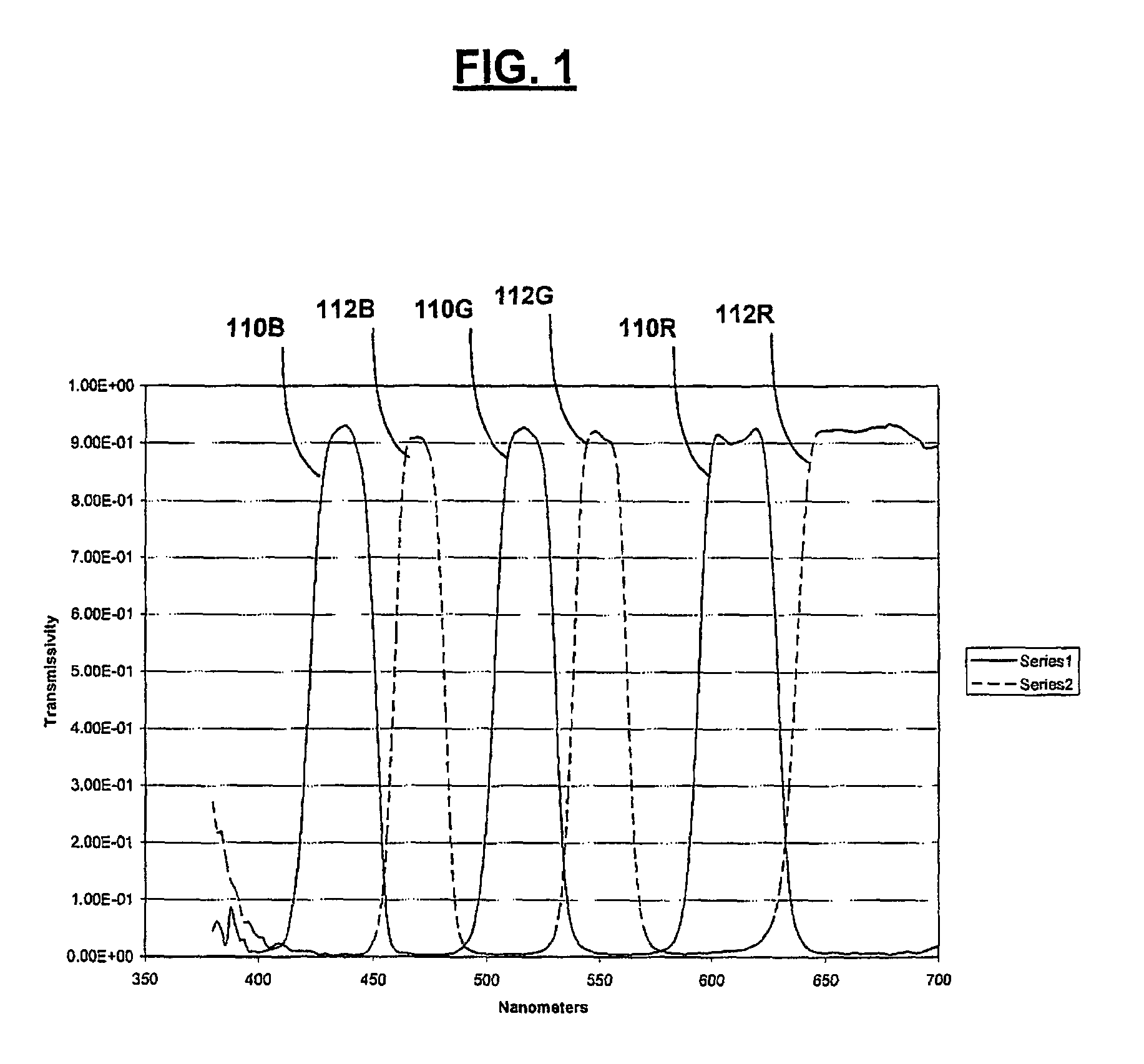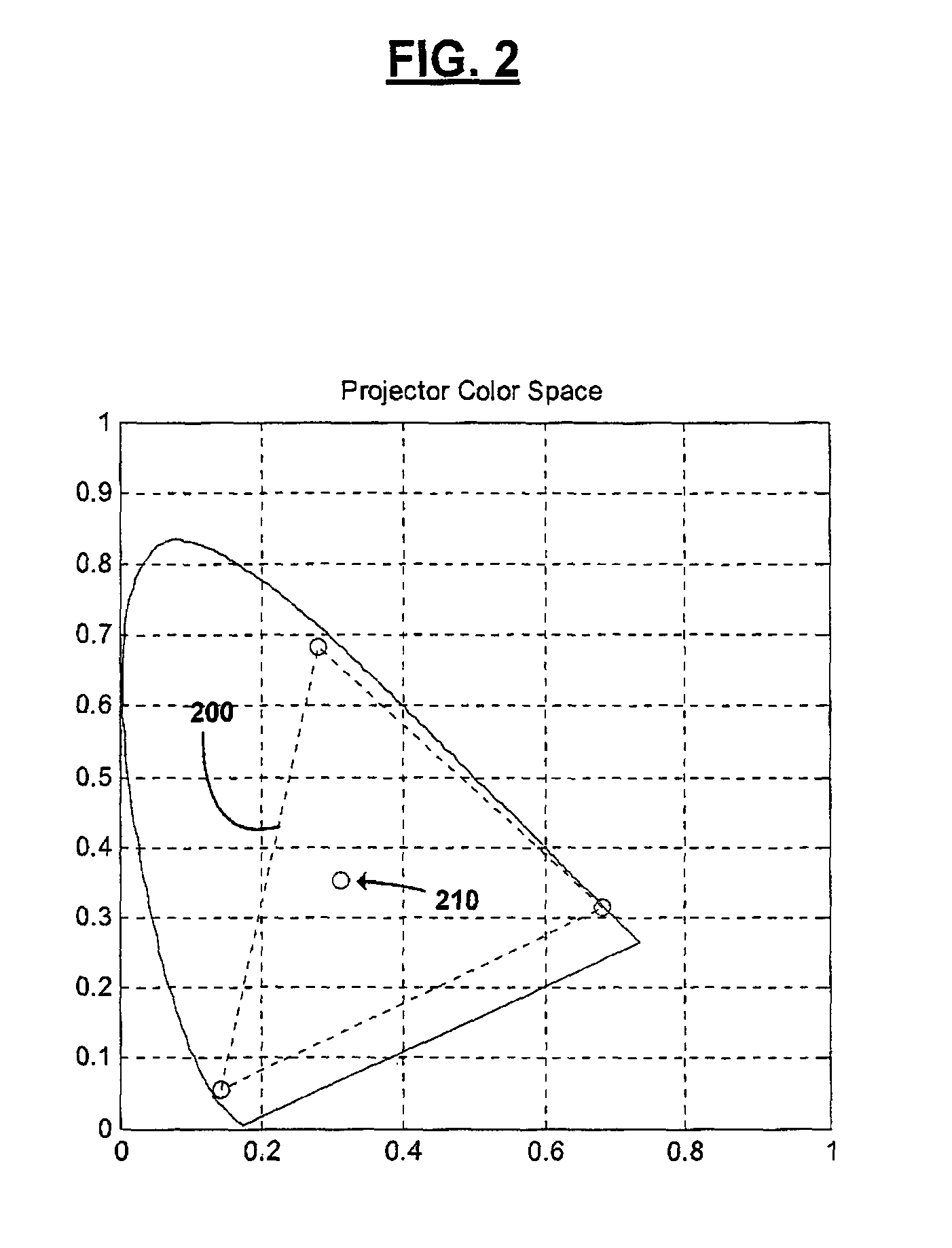Spectral separation filters for 3D stereoscopic D-cinema presentation
a spectral separation filter and d-cinema technology, applied in the field of projection filters, can solve the problems of low luminance efficiency of typical 3-d projection systems, imbalance between luminance levels in channels of 3d projections, and insufficient effective brightness, so as to improve efficiency, reduce the amount of color compensation, and increase the color gamut
- Summary
- Abstract
- Description
- Claims
- Application Information
AI Technical Summary
Benefits of technology
Problems solved by technology
Method used
Image
Examples
Embodiment Construction
[0028]As noted above, the present invention addresses some of the problems with the Spectral Separation method for projecting 3D images, specifically an improvement in the efficiency, increase in the color gamut, and a reduction in the amount of color compensation required. In some cases, the color compensation may not be required.
[0029]Referring now to the drawings, wherein like reference numerals designate identical or corresponding parts, and more particularly to FIG. 1 thereof, there is illustrated a set of left and right spectral separation filters representative of those currently used in D-Cinema 3-Dimensional (3D) presentations. As shown in FIG. 1, the conventional spectral separation filters provide three primaries for each eye by dividing the red, green, and blue color channels of a projector into two sets of primaries, one set for the left eye (primaries 110R, 110G, and 110B) and one set for the right eye (primaries 112R, 112G, and 112B). For example, the left eye is illu...
PUM
 Login to View More
Login to View More Abstract
Description
Claims
Application Information
 Login to View More
Login to View More - R&D
- Intellectual Property
- Life Sciences
- Materials
- Tech Scout
- Unparalleled Data Quality
- Higher Quality Content
- 60% Fewer Hallucinations
Browse by: Latest US Patents, China's latest patents, Technical Efficacy Thesaurus, Application Domain, Technology Topic, Popular Technical Reports.
© 2025 PatSnap. All rights reserved.Legal|Privacy policy|Modern Slavery Act Transparency Statement|Sitemap|About US| Contact US: help@patsnap.com



